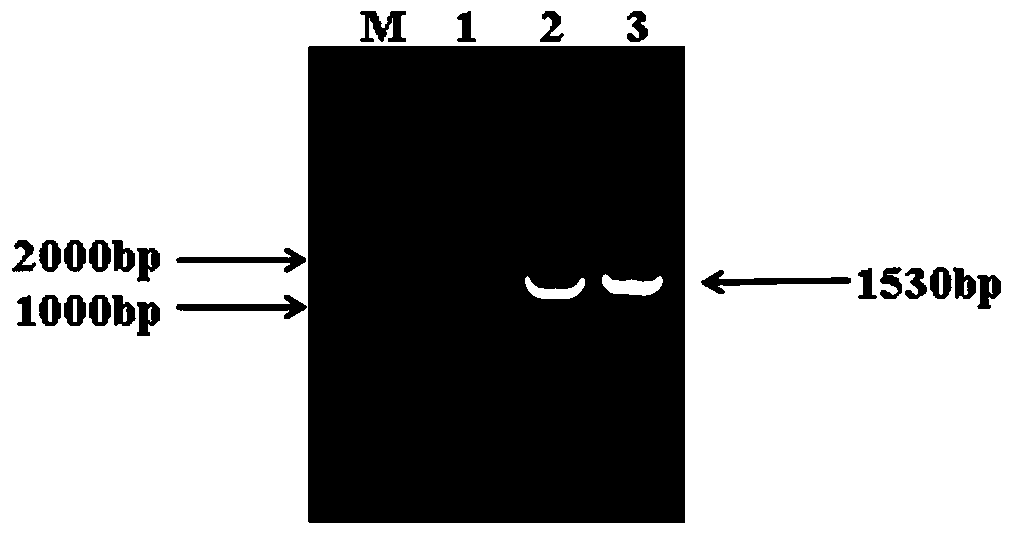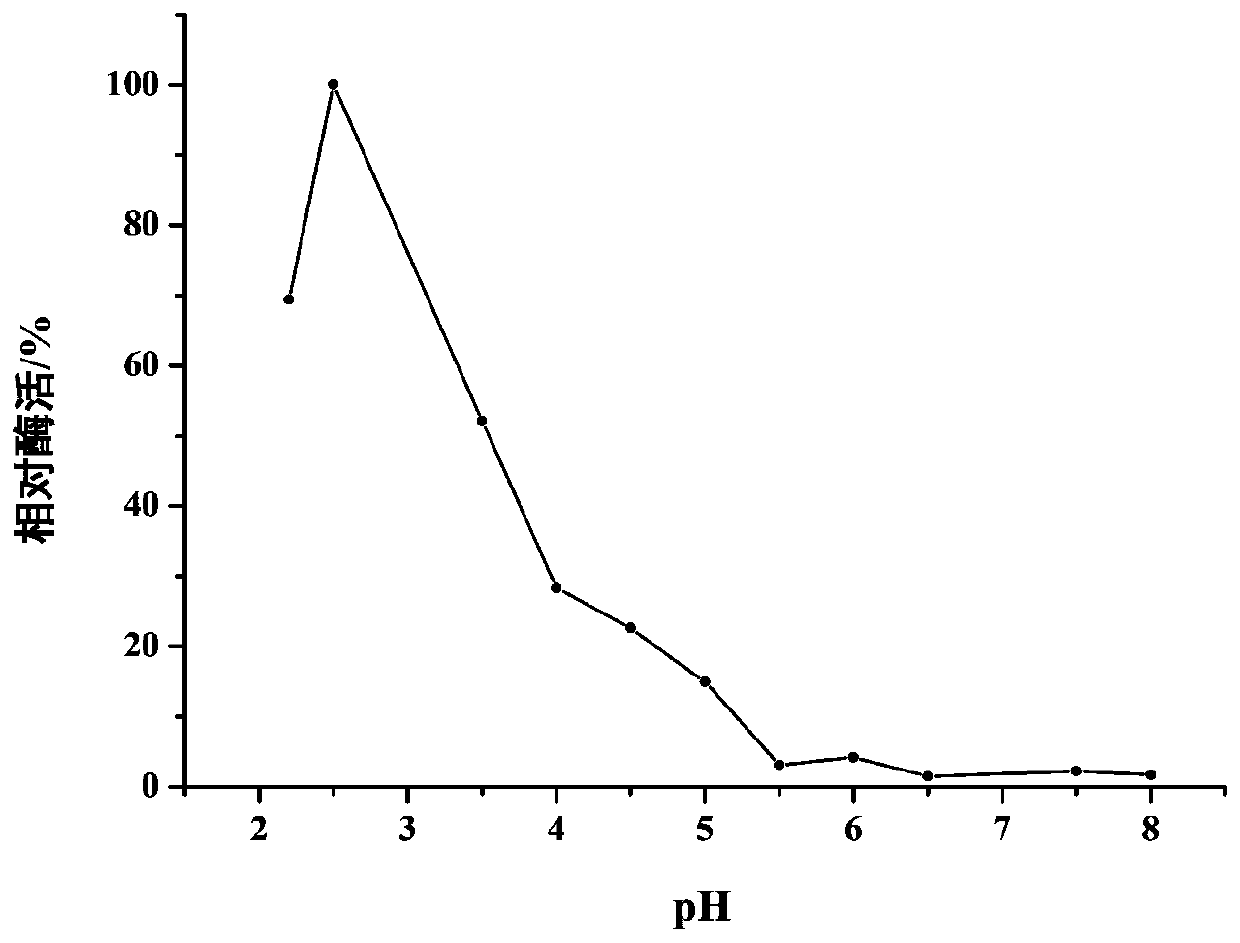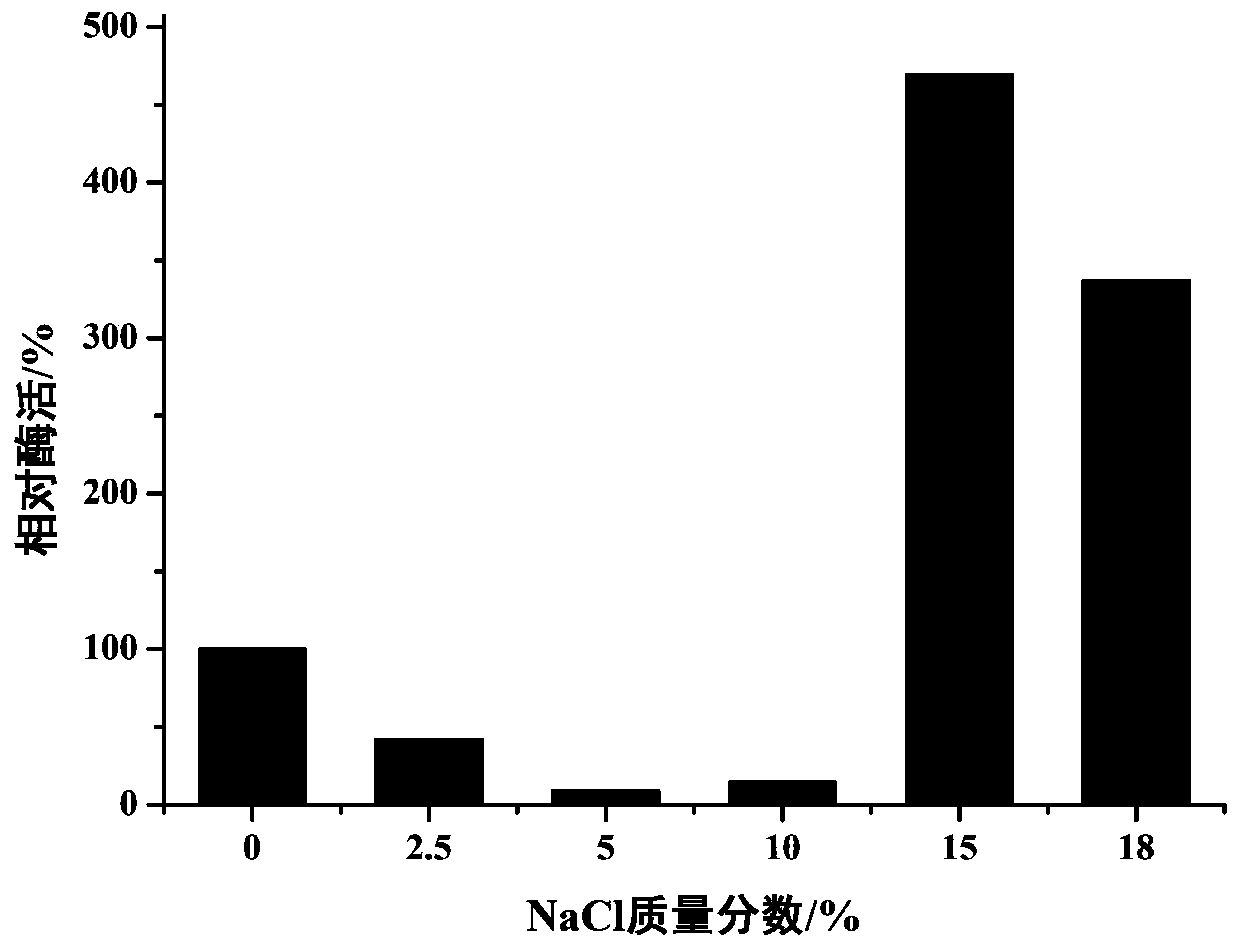A multicopper oxidase recombinant enzyme capable of degrading biogenic amines
A multi-copper oxidase and biogenic amine technology, applied in the field of fermentation, can solve the problems of poor degradation effect and few degradation types, and achieve the effects of improved safety, wide degradation spectrum and obvious degradation effect
- Summary
- Abstract
- Description
- Claims
- Application Information
AI Technical Summary
Problems solved by technology
Method used
Image
Examples
Embodiment 1
[0026] According to the gene sequence of multi-copper oxidase in Lactobacillus paracasei strain L9 (GenBank accession number: CP012148.1) in NCBI, primers were designed, and the genome of Lactobacillus paracasei (Lactobacillus paracasei) preserved in our laboratory was used as a template to amplify Increased copper oxidase gene. The primers required for amplification are as follows:
[0027] Upstream: ATGAAAACCTATACGGACTATTTC
[0028] Downstream: TTA CATTTTCATCCCCATTT
[0029] PCR reaction program: pre-denaturation at 95°C for 3 min, and then the following cycle: denaturation at 95°C for 30 s, annealing at 55°C for 30 s, extension at 72°C for 1 min and 30 s; after 34 cycles, extension at 72°C for 10 min, at 4°C insulation.
[0030] Using the genome of Lactobacillus paracasei as a template, PCR amplification was performed, and the amplification results were displayed by 1% agarose gel electrophoresis after the amplification, such as figure 1 A band of about 1500bp is shown,...
Embodiment 2
[0032] 1. Obtaining the target fragment: using the genome of Lactobacillus paracasei as a template, after the PCR amplification is completed, the amplification result is displayed by 1% agarose gel electrophoresis, and there is a target band of about 1500bp. Purify the PCR product with a DNA gel extraction kit to obtain the target fragment.
[0033] 2. Obtaining the vector: Streak the Escherichia coli containing the plasmid pET-28a on the LB plate containing kanamycin, and after culturing for 12 hours, pick a single colony into a 20mL / 250mL shake flask LB medium (containing kanamycin ), 200r·min at 37℃ -1 Cultivate overnight and extract the plasmid using a plasmid extraction kit.
[0034] 3. Enzyme digestion and ligation: select appropriate restriction enzymes EcoRI and HindIII according to the sequence of the gene and the vector, and react in a metal bath at 37°C for 45 minutes.
[0035] Table 1 50 μL restriction endonuclease digestion reaction system
[0036]
[0037] ...
Embodiment 3
[0044] Mix 2ml of crude enzyme solution with 2mL of a certain brand of commercially available soy sauce, place the mixture in an incubator at 37°C for 48 hours, then centrifuge at 10,000r / min at 4°C for 5min to get the supernatant, and use HPLC to detect the content of biogenic amines content. In the control group, PBS buffer solution was used instead of crude enzyme solution and soy sauce to mix and co-place.
[0045] Table 1 Content of biogenic amines in soy sauce
[0046]
PUM
 Login to View More
Login to View More Abstract
Description
Claims
Application Information
 Login to View More
Login to View More - R&D
- Intellectual Property
- Life Sciences
- Materials
- Tech Scout
- Unparalleled Data Quality
- Higher Quality Content
- 60% Fewer Hallucinations
Browse by: Latest US Patents, China's latest patents, Technical Efficacy Thesaurus, Application Domain, Technology Topic, Popular Technical Reports.
© 2025 PatSnap. All rights reserved.Legal|Privacy policy|Modern Slavery Act Transparency Statement|Sitemap|About US| Contact US: help@patsnap.com



